By Rio Sousa and Maria Cheung
In our last PH Spot article, “Art as a Tool for Public Health Engagement: A Canadian Overview”, we touched on examples of public art that were reaching audiences in ways that extended far beyond the capacity of traditional public health promotion methods. Despite being something that fundamentally affects every person, the discourse around health and healthcare has been highly exclusionary and filtered through a very small, non-representative portion of the population. Topics in health have long been shrouded in complex medical and scientific terminology, primarily accessible through lengthy and expensive journals and academic courses, often leaving the public to rely on highly-trained healthcare professionals to act as translators. This lessens the power individuals have when understanding and making decisions regarding their own health, and results in underrepresented, undereducated, and less healthy populations.
The development of more overt art-based public health programs and installations is certainly a step in the right direction towards increasing the accessibility of public health information, however, the public health field has the opportunity to collaborate with artists and designers to integrate artistic interventions to tackle public health challenges deeper into our societal infrastructure, both physical and cultural.
The Power of Immersion
Research has demonstrated that one of the most effective methods of learning a new language is through immersion. If someone is trying to learn French, for example, spending time in a French-speaking community where the signs and menus are written in French, regularly being spoken to, and hearing people speak to each other in French prompts greater exposure and more holistic engagement with the French language than attending occasional structured classes. A similar approach can be taken to public health. Currently, the bulk of what people learn about their health is in school, in healthcare settings such as hospitals or medical practices, and through public broadcasting which may briefly announce the occasional health policy change or disease outbreak. Each of these methods is rooted in sporadically showing and telling people information, but rarely provides an opportunity for individuals to further engage with or embody it. Furthermore, the general public’s interactions with healthcare are often limited to the brief periods that they are unwell rather than having it incorporated into daily life. People have been removed from the healthcare system for so long, that the solution required must have the ability to infiltrate culture and society in a much deeper and more commonplace manner than simply expanding on current healthcare programs and education in typical institutions such as schools and hospitals. Immersion can be achieved by collaborating with designers and artists to incorporate public health solutions into everyday architecture and media, subconsciously educating the public and normalizing underrepresented populations.
Not A New Idea
This is not a new concept. In fact, artistic ‘solutions’ to political problems can be found in numerous cities around the world. A notably clever and cruel form of design that has caused a great deal of speculation in recent years is ‘anti-homeless structures’ found primarily in metropolitan areas with large populations of unhoused individuals. Hidden in plain sight, these structures can include benches made of materials that get dangerously hot in the summer or freezing in the winter, benches at bus stops that are extremely narrow or slanted, and benches with seemingly practical armrests that divide the bench into several small seats which prevent anyone from being able to lay across them. Many subway grates, which release warm air and are often sought out by unhoused individuals during cold weather, have been covered in spiky objects to prevent people from being able to sit or stand overtop of them. One of the first people to publicly expose these structures on a large scale was the artist Bansky, who created a feature called Cruel Designs in his 2015 art exhibition Dismaland. Several news articles exposing other forms of cruel designs followed, and there was a great deal of confusion and shock amongst the public. These structures had been embedded into public spaces so seamlessly and aesthetically that people did not originally question their presence or purpose. While this sheds light on a rather inhumane example, the concept is a brilliant one and can certainly be remodelled to serve the public rather than exclude certain members.
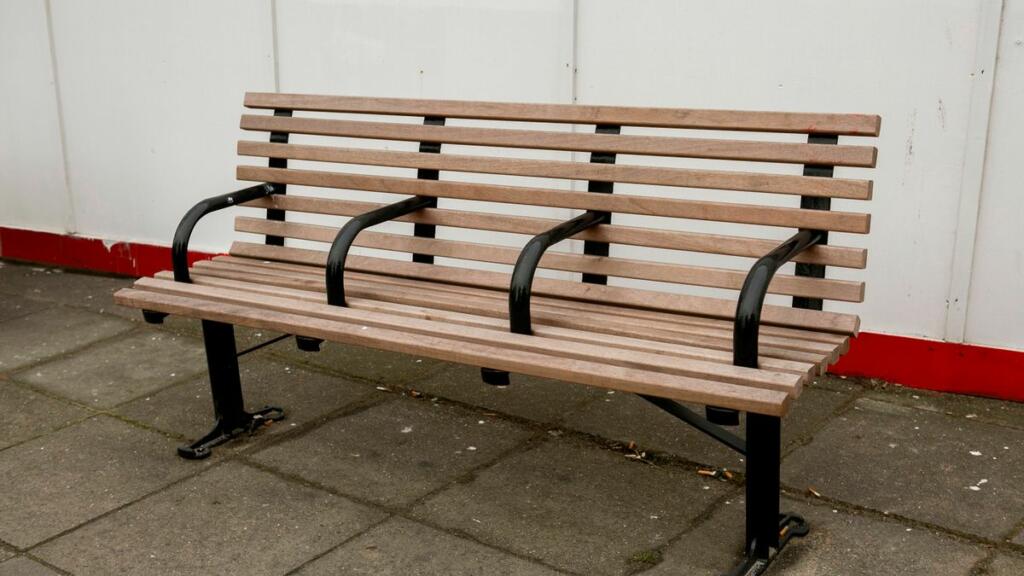
The following are some examples of artistic interventions to public health issues that have been incorporated into everyday sights, including but not limited to architecture, outdoor spaces, film and television, and educational resources.
Inclusive Infrastructure
Crosswalks painted in the colours of the rainbow have been popping up in communities all over North America. At a first glance, these crosswalks may simply appear as joyful visual displays, but they also represent the pride flag of the LGBTQ+ community and serve the purpose of promoting a safe and inclusive environment for individuals who identify.
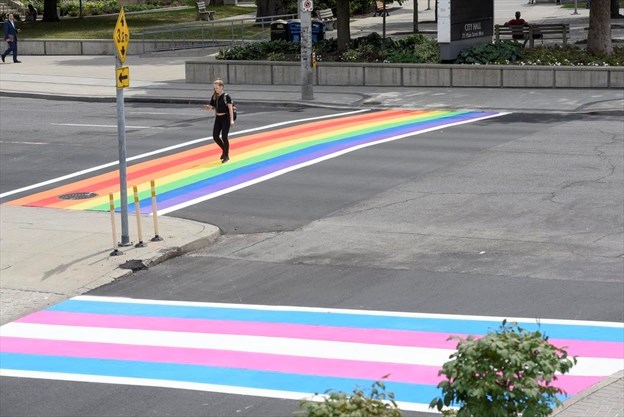
Additionally, there are many artistic ways to promote inclusivity and usability for individuals with physical disabilities. An example may be designing buildings with aesthetic ramps that either merge seamlessly into the surrounding environment, such as the zig-zag ramp-stairs hybrid in the first image, or ones that act as a statement design piece, such as the spiral ramp in the second image. Both add visual and practical value to the space without drawing attention to or alienating the individuals who benefit from them.
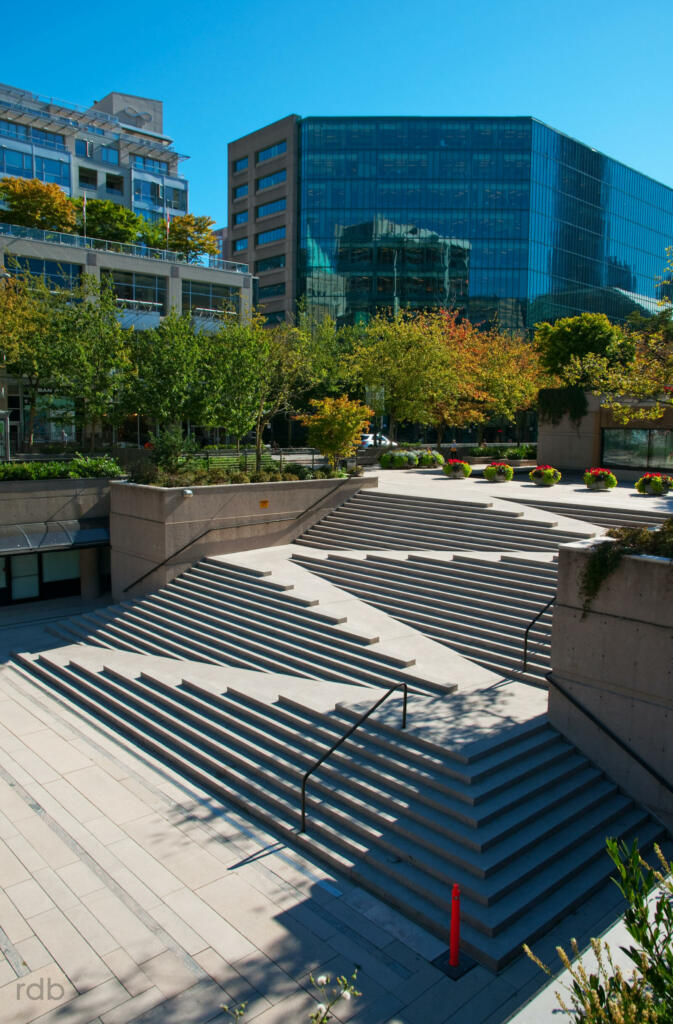
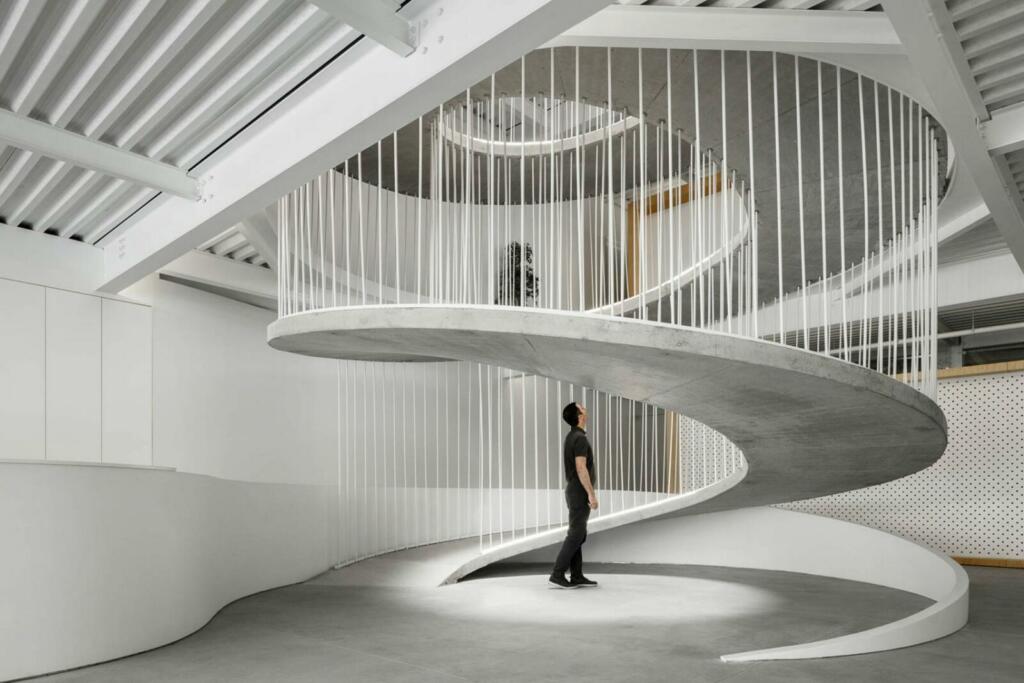
Representation in Film and Television
The concept that ‘representation matters’ is not a new one, either, and has been picking up speed in the past several years. Regularly featuring underrepresented populations in settings or roles that they are not usually shown in; can shift the way people perceive these populations, their abilities, and their ‘place’ in society. An example of this is casting aging individuals in action films or advertisements related to active living to challenge the common narrative in Western culture that older age equates to sedentarism and degeneration. This is something that the Daniels’ 2022 sci-fi film Everything Everywhere All At Once achieved beautifully in their casting of 59-year-old Michelle Yeoh as an aging Chinese immigrant who develops superpowers and engages in out-of-this-world combat scenes. Another example is the 2022 Disney and Pixar animated film, Turning Red, which was praised not only for its diverse cast but also for addressing the often taboo public health topic of puberty and hormonal changes through the playful analogy of a big red panda.
Representation in Public Health Education
The majority of medical textbooks, brochures, and healthcare product advertisements in North America and Europe feature predominantly white people. This is incredibly dangerous due to how health conditions can appear very differently on dark skin tones, resulting in many people of colour going undiagnosed or improperly treated. Including a range of dark and light skin tones when showing how a medical condition appears would increase familiarity with different bodies, improve people’s ability to recognize health abnormalities, and create more equitable treatment of the diverse population being served. Nigerian medical student Chidiebere Ibe recently made headlines for his self-taught medical illustrations depicting various health conditions on Black bodies, with many people claiming they were some of the first Black medical diagrams they had ever seen.
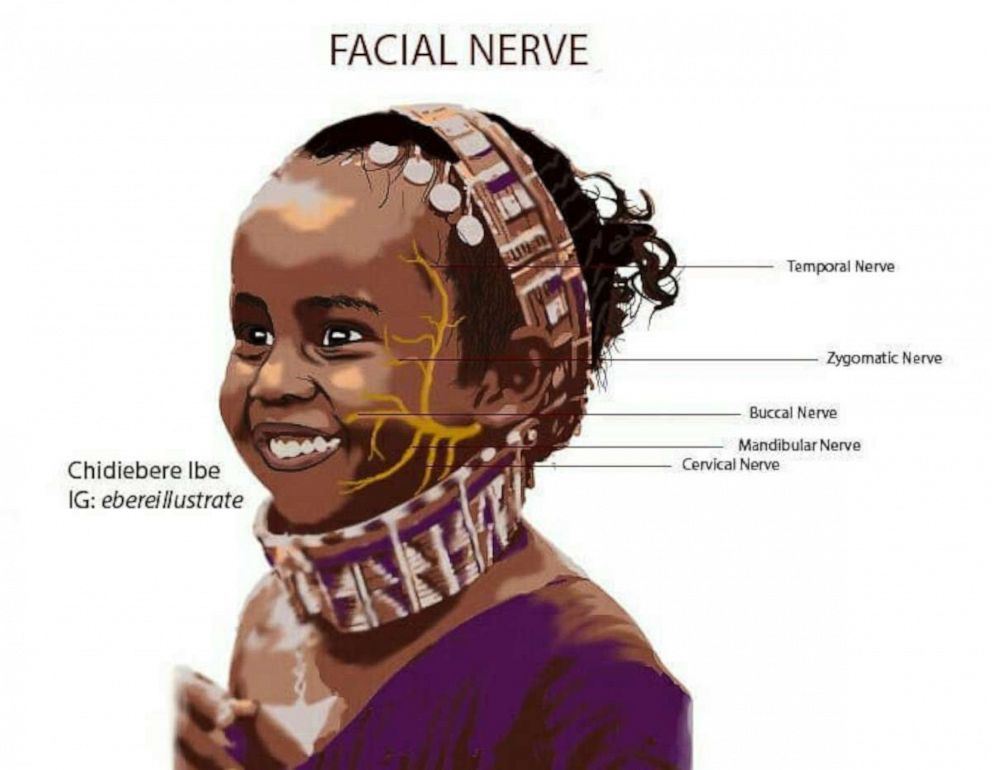

Artistic Symbolism as a Means of Education, Visibility, and Protest
A message accompanied by an image is often more powerful than words alone and can be very effective in circulating ideas while also providing some protection and distance from the people directly involved. The image of the closed fist associated with the Black Lives Matter movement, for example, quickly became a globally recognized symbol of the fight for racial equality. Black Lives Matter symbols became ingrained into different cityscapes; they were painted on city murals, hung from private properties, featured in storefronts and restaurants, as well as on products, and were used as a means of protest, displaying solidarity, and education.
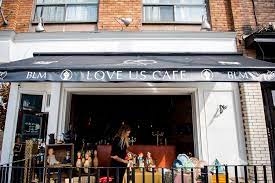
Public health programming is typically developed with traditional buckets in mind, such as policy and program innovation, communication and education innovation, health promotion innovation, as well as advocacy and social justice innovation. As displayed throughout this article, all of these public health programming buckets can be and have been, addressed by artistic solutions in the forms of architecture, outdoor spaces, film and television, and educational resources. Human health is endlessly complex and is further convoluted by our societal systems, and requires solutions that can actually infiltrate all aspects of our communities and become ingrained in our culture rather than be delivered as surface-level information. Art and design have long been recognized as a means of communication with the ability to transcend barriers of language, education and culture, we would even argue that it makes it the ideal medium to achieve new heights in disseminating public health education, creating safe spaces and nudging communities toward healthier and more inclusive behaviours.
About the Authors
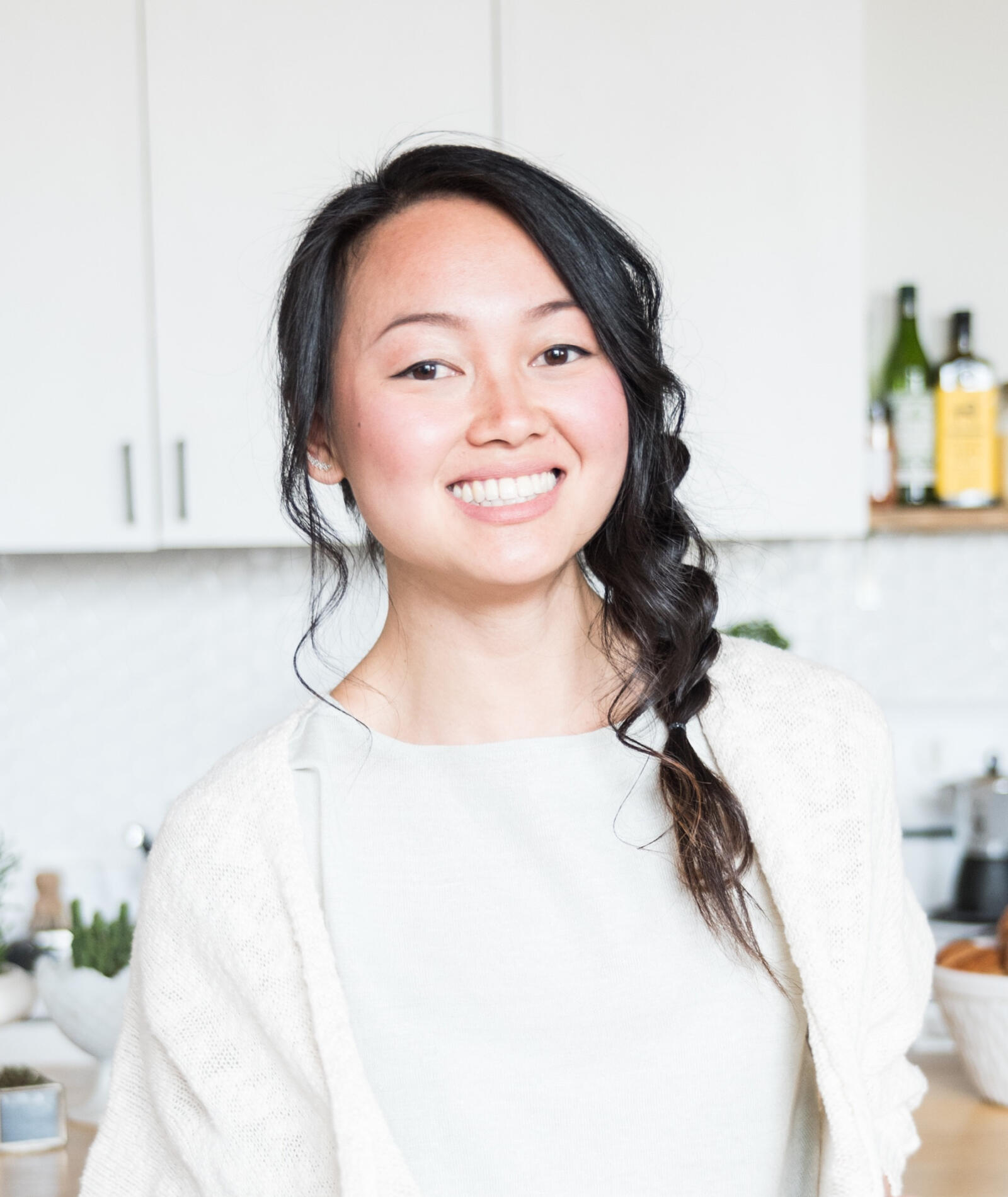
Maria Cheung
Maria is a Public Health, Policy Professional and the founder of Taboo Health bringing over a decade of experience in government and academia. She is a policy maker in acute care and a public health nerd (MPH) passionate about health communications, health promotion and systems design with the creative sector to advance public discourse and cultivate community healing. She is endlessly fascinated by the beautiful, awkward and uncomfortable spaces felt in between the black and white. When not nerding out about public health, art and culture, she is adventuring on a canoe camping trip, on her bicycle for multi day tours, backcountry skiing, or dancing up a salsa and bachata storm.
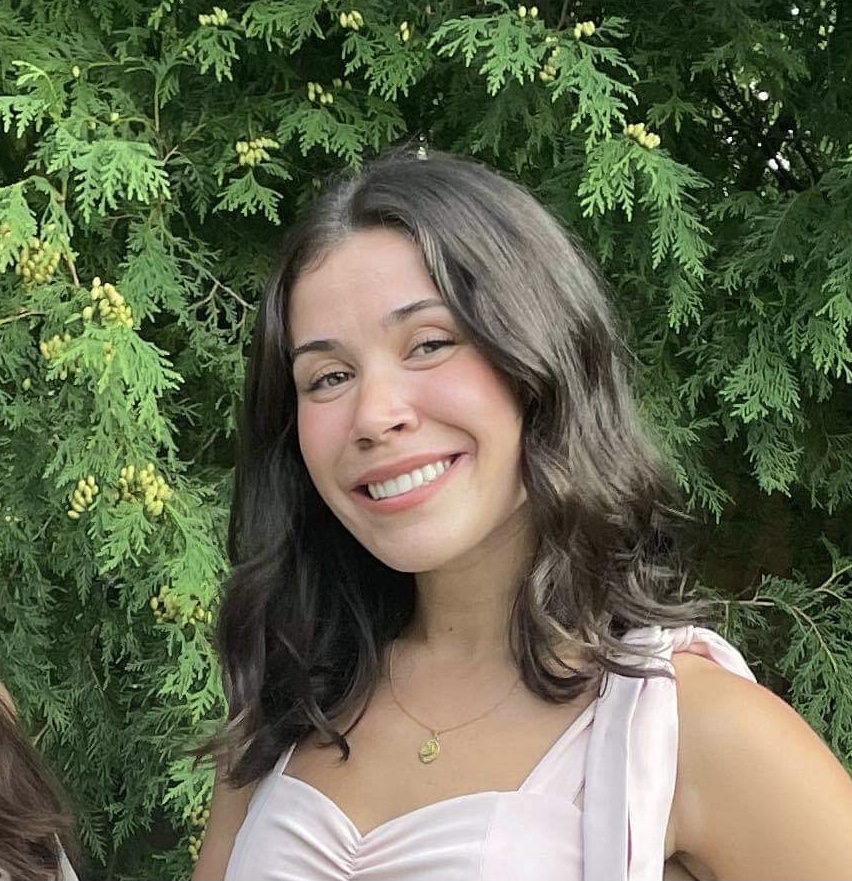
Rio Sousa
Rio is a graduate from the University of Toronto, where she received an Honours Bachelor of Science Specialist Degree in Medical Anthropology, studying medicine and health through both a scientific and cultural lens. Prior to that, she completed 2 years of a dual degree-diploma program through UofT and Sheridan College in English, Theatre and Drama Studies and Performance Acting. Currently, Rio works as a medical scribe for Yale New Haven Health, where she is privileged to assist in the care of oncology patients. Rio holds years of experience in research, scientific writing, policy development, as well as tutoring children with learning disabilities. She intends to pursue medical school. She is deeply passionate about increasing accessibility to healthcare on a local, national and global level, and empowering individuals to have greater control over their health, which she firmly believes starts with strong education and communication.




